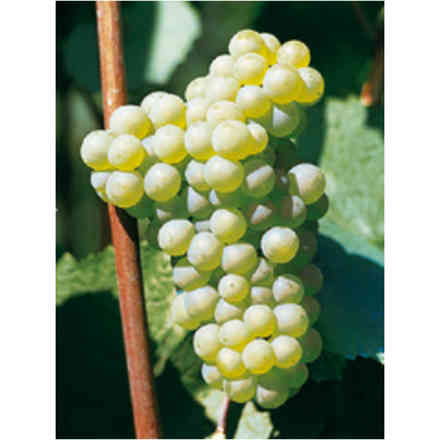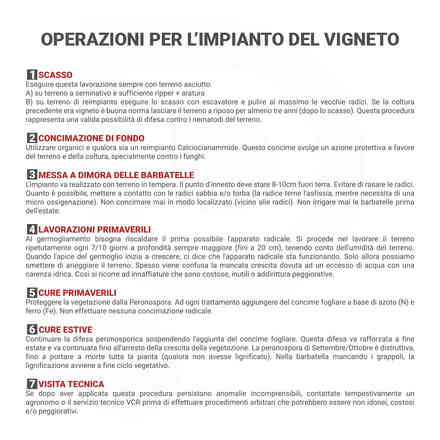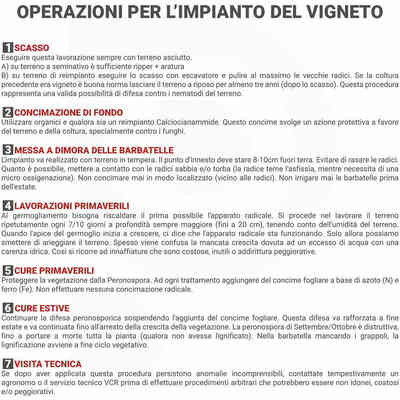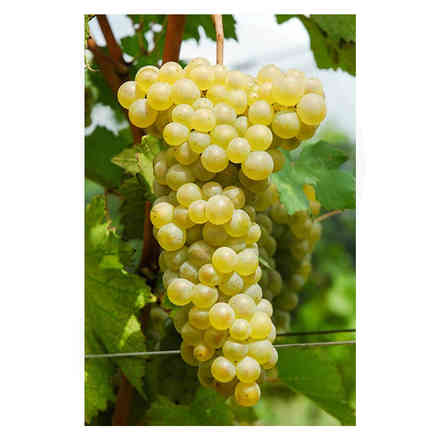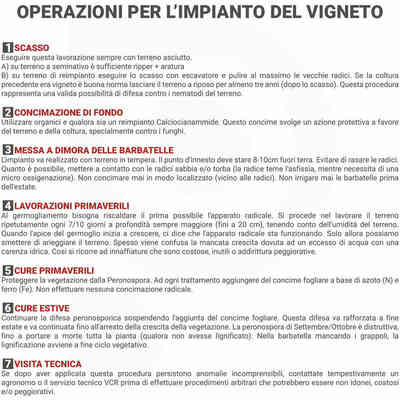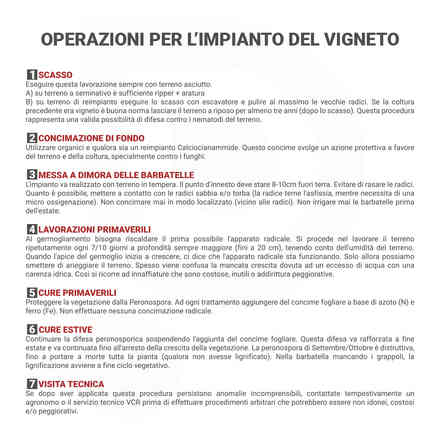
Passerina (10 pieces)
Description
 AUTHORIZED RETAILER
AUTHORIZED RETAILER
PASSERINA (10 pieces)
Rootsocks: 1103P - K5BB - S04 - 140RU - 420A (We will send the graft carrier available at the moment)
Grape variety widespread in the Adriatic area, of uncertain origin with bunch characteristics very close to those of Trebbiano Toscano.
- Ampelographic characteristics: bud with open apex, cotton-like, green in colour with carmine edges. Medium-sized, pentagonal, five-lobed leaves. V-shaped petiolar sinus with overlapping lobes. Velvety underside. Very pronounced teeth. Cluster: large, squat, pyramidal or conical, winged, moderately compact. Berry: large, spheroidal, with thick and consistent pruinose skin, with apparent umbilicus; juicy flesh with neutral flavour.
- Viticultural aptitudes: vigorous vine with semi-erect vegetation habit that adapts to different pedoclimatic environments.
- Cultivation and pruning: prefers long and rich pruning.
- Sprouting time: medium-late.
- Ripening time: late.
- Production: high and constant.
- Sensitivity to disease and adversity: not very sensitive to disease and adversity in general. Resists cold spring weather thanks to medium-late budding.
- Oenological potential: gives wines of a deep straw colour, with a dry, full flavour and good acidity, to be drunk young or after slight ageing.
Clones in multiplication: Passerina VCR6, VCR450, TCG2ISV, UBARAPA18.
CULTIVATED AREA IN ITALY
YEAR 1970 1982 1990 2000 2010
HECTARES n.a. 1,342 1,162 769 1,067
RULES TO PLANT A VINEYARD
1. PLOW
You must perform this operation always with dry soil
A) On arable land is generally sufficient to ripper + to plow
B) On planting soil is generally sufficient to plow with an escavator and to clean the old roots.
If the previous crop was a vineyard, it is a good idea to leave the soil fallow for at least three years (after plowing). This procedure represents a valid possibility of defence against soil nematodes.
2. SOIL FERTILIZATION
Use organics and if it is a reimplantation, use Calciumocyanamide.
This fertiliser has a protective effect on the soil and the crop, especially against fungi.
3.PROPAGATING GRAPE VINE CUTTINGS
The planting should be carried out in temperate soil. The grafting point should be 8-10 cm above ground. Avoid shaving the redices. As much as possible, put sand and/or peat in contact with the roots (the root fears asphyxiation, while it needs a micro-oxygenation). Never fertilize in a localized manner (near the roots). Never water the rooted cuttings before summer.
4.SPRING WORKS
When sprouting, the root apparatus must be heated as soon as possible. Work the soil repeatedly every 7/10 days at increasing depth (up to 20 cm), taking into account the moisture of the soil. When the apex of the bud starts to grow, it means that the root system is functioning. Only then can we stop watering the soil. Failure to grow due to access to water is often confused with a lack of water. This is why watering is used which is expensive, useless or even worse.
5.SPRING CURE
Protect vegetation from Peronospora. To each treatment add nitrogen (N) and iron (Fe) foliar fertilizer. Do not make any radical fertilization.
6.SUMMER CURE
Continue with the defense against Peronospora by suspending the addition of the foliar fertilizer. This defense should be reinforced in late summer and should be continued until vegetation growth stops.
The September/October blight is destructive, to the point of bringing death to the whole plant (if it has not lignified). The rooted vine lacks clusters, so lignification occurs at the end of the vegetative cycle.
7.TECHNICAL VISIT
If incomprehensible anomalies persist after this procedure, contact an agronomist or the VCR Technical Service promptly before carrying out arbitrary procedures which may be unsuitable, expensive and/or worsening.


























